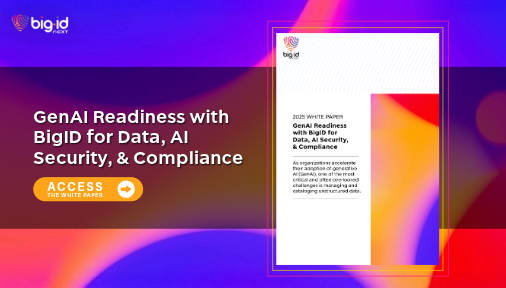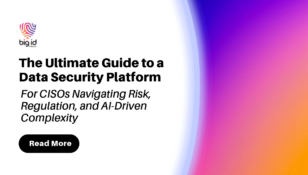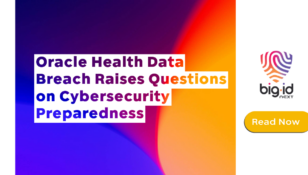AI Data Security: Complete Guide & Best Practices

AI Data Security: Protecting Sensitive Information in the Age of AI
Like many of us, you’re probably using AI more and more, in business and in everyday life. But its increasing use begs a growing concern around AI data security: how do we protect the sensitive data that AI relies upon to function?
From medical records to financial transactions, we trust AI to process a lot of sensitive details these days. After all, it requires this data to function. With this comes great risk, however, and we can’t ignore the potential for breaches or misuse that invade our privacy.
As a result, prioritizing data security is more important than ever. Though threats such as data poisoning and adversarial attacks are becoming more prevalent, there are many ways to combat these risks with the right security frameworks in place.
Let’s dive into the essential aspects of AI data security. In this article, we’ll cover the key challenges facing AI and data security and uncover some best practices for protecting your AI systems.
How Data is Used in AI
Data is the food that AI is fueled by. Without it, AI systems simply wouldn’t function. Just as we learn through textbooks and experiences, AI learns from the data it’s fed. And the more diverse and in-depth the data is, the smarter and more accurate an AI model will become. But AI doesn’t just require data at its beginning; its need for data continues throughout its entire lifecycle.
AI uses data in four different stages:
- Training: Firstly, AI algorithms are trained by analyzing data to identify patterns and make predictions.
- Testing: AI is provided with multiple data sets to test the capability and efficiency of its model. We need to learn how it responds to data it hasn’t seen before. This checks that the AI model isn’t just memorizing patterns but also learning how to apply these intelligently.
- Operation: Fresh data is given for AI systems to process, helping with real-time decision-making and predictions.
- Improvement: AI doesn’t stop learning once it’s deployed. In fact, most AI systems are continuously retrained using new data to enhance their algorithms and improve performance.

What is AI Data Security?
Simply put, AI data security is taking steps to protect AI systems and the data they use. The problem is that AI systems rely on big data to function, so it’s inevitable that they handle large amounts of sensitive information, which needs to be secured. If not, it can lead to severe consequences, from financial loss to reputational damage and non-compliance with regulations.
So what exactly are we protecting AI systems from?
Firstly, the data that AI models use can be manipulated. Broadly speaking, this is where an attacker alters an AI’s training data to reduce the accuracy of the system’s outputs and introduce biases.
Insider threats happen when those within your organization take advantage of their position to steal or sell an AI’s data, modify the AI model to skew its results, or corrupt the system’s performance.
But attackers don’t always come from within—data breaches can allow external attackers to gain access to sensitive information such as financial records, medical secrets, or personally identifiable information (PII).
AI data security isn’t just about protecting data itself—it’s also about securing the models that process it. As mentioned, this involves actively defending against attacks while also proactively preventing these using privacy measures such as anonymization.
The goal is to protect the integrity of AI models and the privacy of the data they use, all while ensuring you meet regulatory standards.
Understanding AI and Data Security Risks
To successfully secure data being used by AI, you need to know what you’re up against. AI security differs from traditional cybersecurity because AI threats are ever-evolving. New methods of attack emerge as quickly as the technology advances. Plus, AI systems rely on plenty of data to function, meaning the attack surface is much larger, and cybercriminals have more opportunities to target vulnerabilities.
Here are some of the greatest security threats AI systems face:
Data Poisoning: Manipulating Training Data Maliciously
Data poisoning is one of the most serious threats AI systems face. Attackers can change the decision-making process of AI systems by creating false examples for it to learn from. By adding fake information into an AI system’s training data, they can cause the AI to provide misinformed or false information.
To put it simply, data poisoning is like providing “bad fuel” for AI to learn from, which causes it to perform poorly and make wrong choices.
This could have extremely damaging impacts in industries such as medicine, where a data poisoning incident could lead to consequences like false diagnoses.
Adversarial Attacks: Exploiting Weaknesses in AI Models
While data poisoning happens during AI training, adversarial attacks target deployed models. Attackers add small, almost invisible changes to an AI’s data to fool it into thinking something’s true when it’s not. Although these changes are too subtle for a human to notice, they cause big errors in AI responses.
The consequences of adversarial attacks can be huge, particularly if the AI is being used for critical tasks.
Model Inversion Attacks: Retrieving Sensitive Data from AI
Model inversion attacks are when someone tries to reverse-engineer, or “peek inside,” an AI model to try and gain information about the data it was trained on.
Attackers don’t directly access the data, but they can input clever prompts and invert the model’s response to try to uncover private details. For example, an attacker may be able to access someone’s financial details by analyzing the model’s answers to leading prompts.
Automated Malware: Software to Compromise AI Systems
Another significant threat to data security and AI models is automated malware. These can, without any human involvement, target and compromise the systems that store and process AI data.
Once malware infects an AI system, it can quietly gather sensitive information and tamper with data. It’s like a silent intruder that can disrupt or steal the data that AI needs to function.
This can lead to major privacy breaches if the AI is processing PII.

Best Practices for Securing AI Models
Data security for AI is complicated even more by the fact that AI systems use data in multiple stages of their development. Because of this, they require security in both the training and deployment phases. But, as AI continues to grow, securing the systems that power it and the sensitive data it processes becomes even more critical.
Let’s go over some of the key ways you can secure AI models for data protection:
Safeguarding AI Models in Training
The first stage of data security in AI starts with how you train your model. This is a critical step as, if training is compromised, everything that follows is built on shaky ground.
You should train an AI system in a tightly controlled and isolated environment. This allows access to be monitored and managed, making it harder for attackers to interfere.
But securing the training environment is just step one. It’s also imperative that the data you’re feeding your AI in training is clean. This involves validating and sanitizing any input data. At this stage, you’re checking for irregularities, anomalies, or any red flags that show signs of manipulation.
By cleaning your data, you can preserve its integrity and ensure that your AI is learning from reliable information. With this foundation, you can help reduce the risk of model errors.
Protecting Deployed AI Models
Once an AI model is in use, it faces a new set of security challenges. As a result, you need to continue to make sure only the right people can access it and that the model hasn’t been tampered with. Authentication (verifying a user’s identity), encryption (making data unreadable to outsiders), and access controls (limiting who can do what in the system) are some of your weapons against attacks at this stage.
As in the training stage, you need to maintain control over the data feeding the AI model. Once deployed, AI models can receive harmful and unpredictable inputs. So, it’s important to maintain validation and sanitization to prevent attackers from influencing the model’s behavior.
Ironically, artificial intelligence itself can actually be a useful tool in enhancing the security of data. Generative AI data security can help to fortify the above defenses and stay one step ahead of cyberattacks. With machine learning algorithms, AI can automatically analyze patterns in data traffic and detect any anomalies. It can also learn from and adapt to new threats in real time. This allows for a quick response, ensuring that security vulnerabilities are addressed before they cause harm.
How to Strengthen AI Data Security
Establish a Robust Security Framework
A good privacy and security framework is the bottom line of any strong AI security strategy. To start out, you should have strict identity and access management (IAM) controls and a zero-trust approach, which assumes every access request could be a threat. This encourages you to be vigilant in ensuring only authorized users can interact with sensitive data.
But let’s face it—the real challenge is preventing attacks that could corrupt your AI model’s training and deployment. The solution to this begins with a privacy-by-design approach, which strengthens security by embedding encryption, anonymization, and compliance mechanisms from the start. Additionally, techniques like adversarial defense, secure model deployment, and real-time threat detection help protect against manipulation and unauthorized access.
By combining these measures, you’ll enhance security, maintain compliance, and ensure AI systems operate safely and ethically.
Continue Monitoring and Anomaly Detection
As previously stated, the work is far from over once an AI model is deployed. Continuous monitoring is vital to detect any unusual behavior that could indicate an attack. Utilizing anomaly detection systems and behavioral analytics can help you to quickly identify suspicious patterns that indicate a security breach or attack.
In both training and deployed AI models, it’s vital to use validation and sanitization on any data inputs. This will check them for any irregularities, discrepancies, or potential attack vectors before the data is processed, reducing the chance of prompt injection or poisoning attacks.
Protect AI Data Privacy
Protecting the data AI models use is just as crucial as securing the models themselves. Anonymization and pseudonymization are two powerful ways of doing this.
Anonymization takes any personal identifiers out of data so that individuals can’t be traced, while pseudonymization (as the name suggests) replaces identifiers with pseudonyms. This keeps the data safe but still usable for AI training. These methods reduce the risk of data breaches while still allowing AI systems to learn effectively.
Another approach is synthetic data generation, which creates artificial data that appears just like the original. This allows AI models to be trained using realistic data without exposing any sensitive information.
Similarly, privacy-preserving record linkage (PPRL) is when you can connect and compare data across two different sources, but do not have to reveal identifying details. This can be especially useful for combining data from separate organizations, such as two hospitals, without compromising patient confidentiality.
Employee Training and Regulatory Compliance
Having just one or two individuals responsible for AI data security is no good—it’s a team effort. Instead, provide regular training on how to spot AI-related threats, such as adversarial attacks or data poisoning. This will allow all employees to understand the risks and stay up-to-date on best practices. As a result, everyone plays their part in defending your AI systems.
When it comes to regulations, there are a number of privacy laws, such as the General Data Protection Regulation (GDPR), California Consumer Privacy Act (CCPA), or the upcoming AI Act, that you must stay compliant with. Integrating these regulations into your AI development and deployment is important, both to avoid fines and also to protect your customers and your business.
So, as we’ve covered, securing AI models needs a combination of technical strategies with a privacy-focused approach and constant vigilance. By establishing a strong security framework, using threat detection tools, and staying compliant with privacy laws, you can help protect both your AI models and the sensitive data they work with.
Collaborate and Share Information
Strengthening AI data security means looking beyond your organization. For instance, working with educational institutions or research centers that are focused on AI security can provide access to useful insights into new threats and strategies to prevent them.
What’s more, engaging with regulatory bodies can be highly beneficial in staying compliant and shaping future policies. Partnering with these institutions will give you a deeper understanding of their requirements so you can implement them more effectively.
These relationships are a key way to keep your AI security policies proactive, informed, and aligned with developments in the AI landscape.
Ethical Considerations and Governance in AI Data Security
We can’t just let artificial intelligence run amok without making sure its actions are benefiting business and society as a whole. That’s where AI regulations and ethics come in. These impose a number of principles that AI models must follow in order to ensure their actions are fair and transparent.
GDPR AND CCPA
The GDPR and CCPA are the two primary regulations focused on protecting individuals’ data privacy. As such, they play an important role in data security and AI. They set strict guidelines on how personal data is handled by organizations.
The GDPR applies to any business collecting data from people located within the EU. Under this regulation, individuals have the right to know how their data is being used and must give explicit consent for it to be processed.
Similarly, the CCPA (applying to California residents) gives individuals greater control over their personal data. Companies must disclose what they collect and give individuals the right to access their personal information.
In AI, these regulations mean that any stored data should be managed carefully with access restrictions and minimization. Businesses should obtain legal permission for data processing in AI models and state how and why the AI is being used.
Bias and Discrimination
It’s crucial to ensure that the training data used for AI models doesn’t lead to discrimination against specific genders, races, and ages. Regular audits of AI outputs can help to monitor this, ensuring that they are not unethical.
Transparency
To maintain transparency, how AI systems make decisions and produce specific results must always be determinable. This means you should always be able to clearly communicate how AI data was gathered, stored, used, and protected. In essence, you should maintain a window into the inner workings of AI models, as this provides trust in their results.
Accountability
As we know, AI doesn’t exist in a vacuum—it’s designed and deployed by humans. This means that accountability for wrongdoing ultimately lies with the organization or party that oversees them. There must be clear guidelines around who this is and how they will respond should an issue occur.
AI Data Security Made Easy With BigID
If you’re looking to enhance your AI data security, BigID has the solution for you. Its comprehensive suite of AI security and governance tools helps businesses like yours to protect their sensitive data and stay compliant with privacy regulations.
The platform offers features to:
- Protect and govern AI models
- Improve data hygiene
- Catalog and curate AI data
- Identify and remediate risk
BigID can help you safeguard your AI model from potential threats while keeping data privacy at the forefront.
Schedule a demo to see how our data security solutions can help your specific situation.













